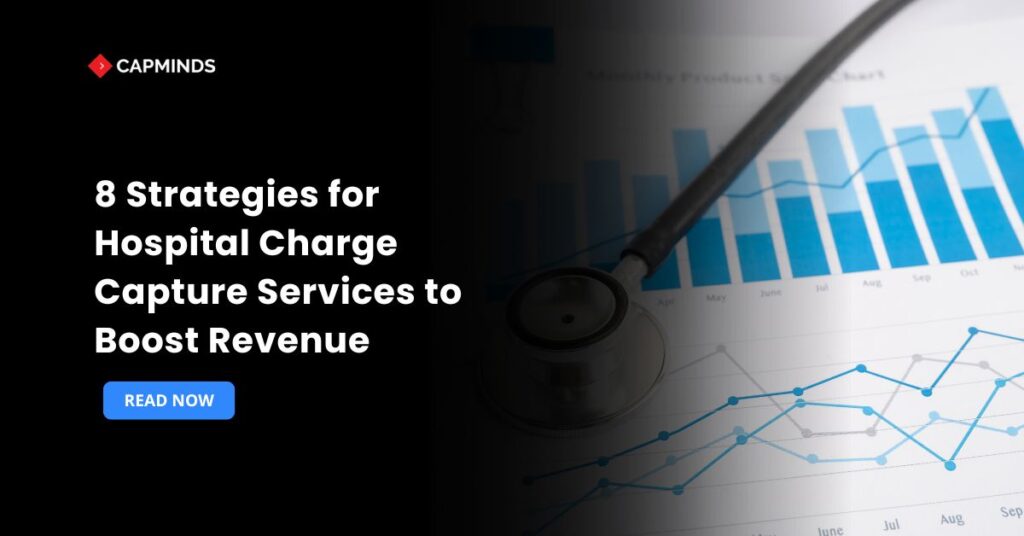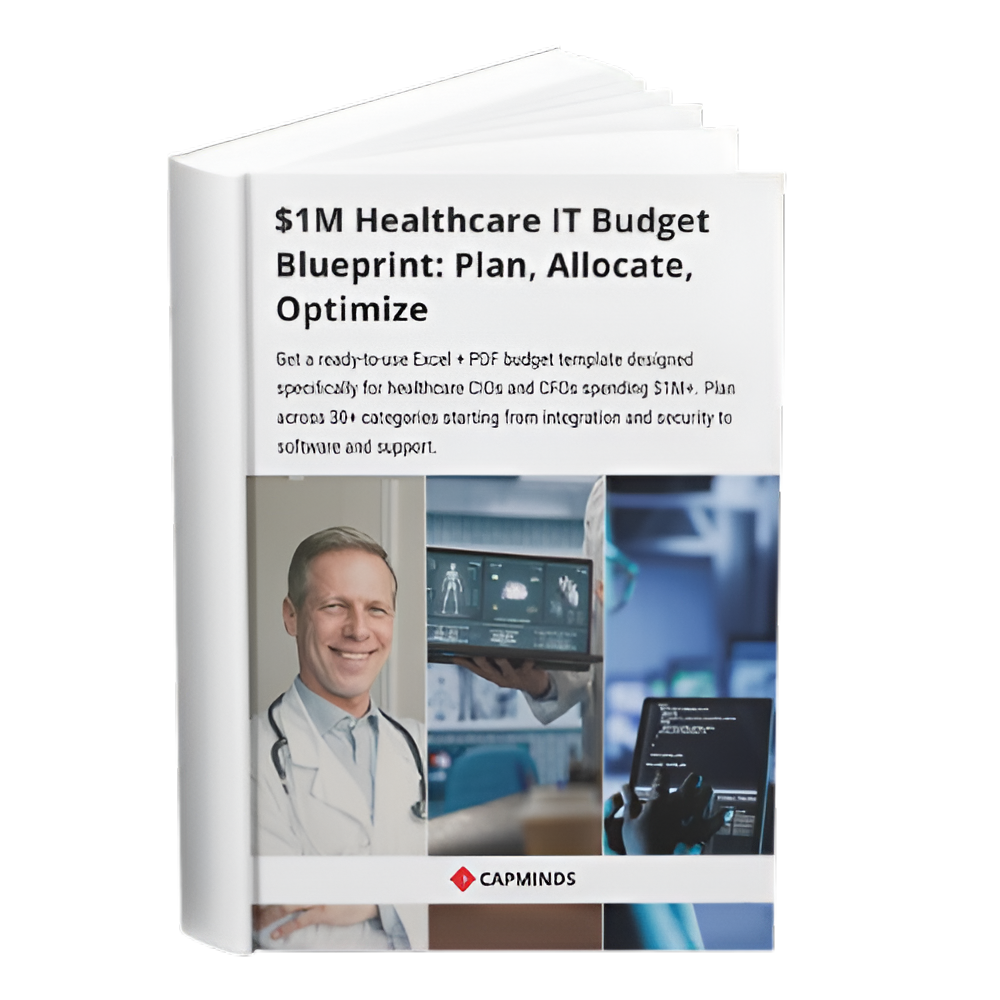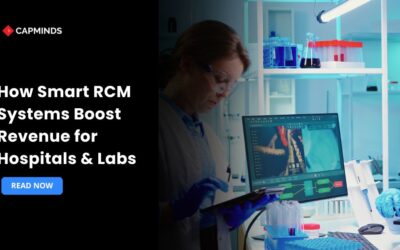8 Strategies for Hospital Charge Capture Services to Boost Revenue
Effective charge capture is a key component of hospital financial stability. When charges for medical services are missing or recorded inaccurately, healthcare organizations face delayed reimbursements, income loss, and compliance issues. The competitive healthcare system makes such inefficiencies unaffordable for institutions.
Organizations can increase patient satisfaction, decrease denied claims, and improve their revenue cycle by putting effective charge collection procedures into place.
In this blog, you’ll learn the 8 best practices of hospital charge capture that can assist providers in achieving long-term financial stability.
1. Standardize the Documentation Processes
Consistent documentation ensures that all services delivered to patients are accurately recorded. Hospitals frequently suffer from differences in how physicians and staff document services. Without a defined methodology, charges may be incomplete or incorrectly coded.
To solve this, hospitals should establish explicit procedures for documentation standards. Training physicians and personnel on these regulations guarantees that everyone follows the same guidelines. Electronic templates, drop-down options, and smart prompts in the EHR can help promote compliance.
Key Strategies include:
- Using standardized clinical documentation templates.
- Implementing real-time prompts for physicians.
- Conducting audits to check compliance.
2. Use Technology for Automated Capture
Manual charge capture is prone to errors and delays. Organizations can drastically reduce missing charges by implementing automated charge capture technologies in their hospital’s EHR. Automated systems identify incomplete documentation and direct services to the appropriate billing codes.
Hospitals should also ensure that charge capture solutions are seamlessly integrated into clinical workflows. When doctors can document services without leaving their primary process, adoption rates increase and revenue leakage decreases.
Benefits of Automation:
- Reduced human error.
- Faster submission of claims.
- Real-time tracking of missing charges.
3. Train Physicians and Clinical Staff
Charge capture is not just the billing department’s responsibility. Physicians and clinical staff are responsible for appropriately documenting services. Unfortunately, many providers are unaware of the financial implications of inadequate or incomplete data.
Hospitals should offer continual education on charge capture best practices. Training sessions should cover how charge capture impacts revenue cycle management and compliance. Role-specific training ensures that physicians and nurses understand their respective roles.
Effective Training Methods include:
- Monthly refresher sessions.
- Case-based examples that demonstrate impact.
- Integrating charge capture education into onboarding programs.
4. Monitor and Audit Regularly
Regular audits are required to discover holes in the charge capture process. Hospitals can identify inaccuracies by evaluating clinical data as well as submitted claims. For example, an audit may find that a specific department routinely overlooks supplementary services like lab tests or imaging.
Not only should audits identify errors, but also recommend corrections. Reporting audit results to doctors and employees encourages higher awareness and responsibility. Through time, this cycle of feedback reduces recurring errors.
Audit Checklist Items:
- Compare clinical notes and billing charges.
- Review often refused claims.
- Evaluate department-specific performance.
5. Enable Real-time Charge Capture
Delays in charge entry frequently result in lost revenue. Hospitals should seek to implement real-time charge capture, which records services immediately after they are delivered. Mobile charge collection apps and point-of-care documentation solutions can help make this happen.
Real-time collection also enhances data accuracy since doctors record services while details are still fresh. Faster charge entry shortens the revenue cycle and lowers the likelihood of claims being denied due to missing data.
Advantages of real-time capture:
- Faster reimbursement cycles.
- Lower denial rates.
- Improved physician satisfaction.
6. Physician Involvement in the Revenue Cycle
Physicians are central to patient care, but they are often separated from hospital finances. Involving them in the revenue cycle encourages collaboration and responsibility. Hospitals can give physicians data demonstrating how their paperwork affects reimbursement.
When doctors recognize how missed charges influence overall revenue and patient billing precision, they are more proactive in complying with best practices. Payment incentives on the basis of proper documentation can also motivate clinicians to give charge capture priority.
Engagement Strategies include:
- Providing physicians with performance dashboards.
- Sharing revenue cycle metrics during department meetings.
- Recognize outstanding performers for precise documentation.
7. Align the Coding and Clinical Teams
Differences are often caused by coding teams and clinicians not being aligned. Physicians might not understand coding standards, and coders might not have clinical context. The possibility of missed or inaccurate charges increases as a result of this discrepancy.
To solve this, hospitals should encourage collaboration between the coding and clinical teams. Both teams stay in sync through regular meetings, feedback sessions, and cross-training. This promotes compliance, minimizes denials, and boosts coding accuracy.
Best Practices for Alignment
- Organizing collaborative coding and clinical workshops.
- Giving coders access to clinical details.
- Developing open communication avenues for clarity.
8. Use Analytics for Continuous Improvement
Analytics can provide significant information on charge capture performance. Monitoring indicators such as refusal rates, missing charges, and revenue leakage allows hospitals to discover patterns and manage recurring concerns.
Advanced analytics can even identify high-risk places where charge capture failures are expected. Funding for particular departments might then be proactively allocated by hospitals. This data-driven strategy helps businesses improve their revenue cycle over time.
Analytics Focus Areas:
- Identifying the main sources of refused claims.
- Tracking physician documentation compliance.
- Comparing performance across departments.
CapMinds Hospital Charge Capture & RCM Services
At CapMinds, we understand that efficient charge capture is more than just revenue protection; it’s the foundation of a sustainable healthcare operation.
Our digital health tech services are designed to eliminate revenue leakage, accelerate reimbursements, and ensure compliance across your organization.
With our end-to-end expertise, hospitals can transform their financial performance and focus on what matters most is delivering quality patient care.
Our core services include:
- Charge Capture Optimization – Real-time, automated solutions that minimize missed charges.
- Revenue Cycle Management – Comprehensive billing, coding, and denial management services.
- EHR/EMR Integration – Seamless workflows that improve documentation accuracy.
- Analytics & Compliance Monitoring – Actionable insights to strengthen financial stability.
- Physician & Staff Training – Ongoing education to align teams with best practices.
Partner with CapMinds to achieve 95–98% clean claim rates and future-proof your revenue cycle.
Let CapMinds be your trusted hospital charge capture service partner.




